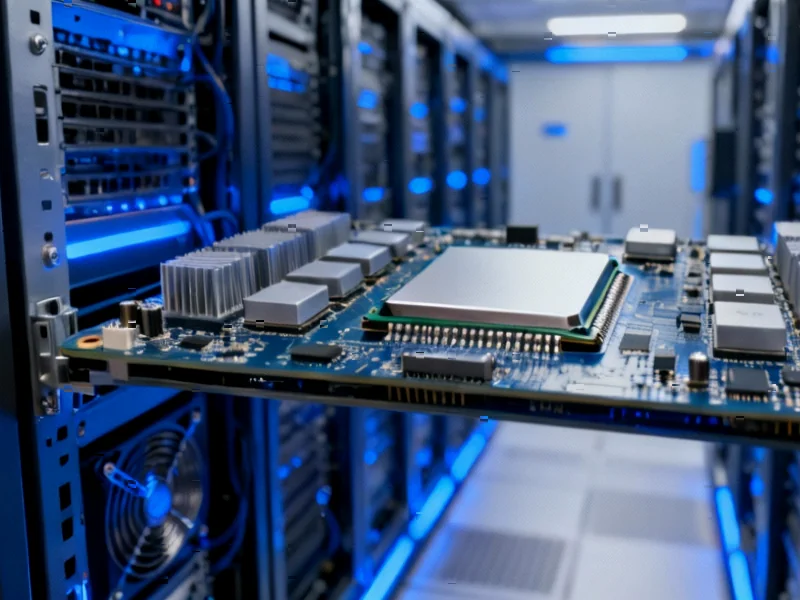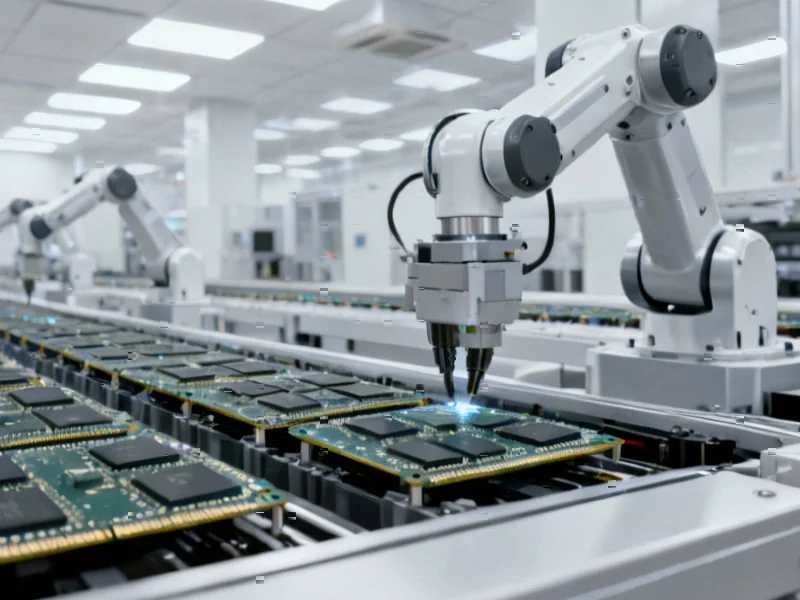According to TechSpot, Nvidia has unveiled its Vera Rubin “Superchip” AI platform at this week’s GPU Technology Conference in Washington. CEO Jensen Huang revealed the third-generation LVLink 72 rack-scale computer features a single “Vera” CPU with 88 custom Arm cores and 176 threads alongside two “Rubin” GPUs delivering up to 100 petaFLOPS of FP4 compute performance. The liquid-cooled system contains six trillion transistors and 2TB of low-latency SOCAMM2 memory, with the base configuration offering roughly 100 times the raw compute performance of Nvidia’s original DGX-1 system. Mass production is expected in the second half of 2026, with NVL144 systems launching in late 2026 or early 2027 and the more powerful NVL576 systems following in late 2027. This announcement represents Nvidia’s continued evolution beyond gaming toward dominating the AI hardware landscape.
Table of Contents
The Architecture Revolution Behind the Numbers
What makes Vera Rubin particularly significant isn’t just the raw performance numbers, but the underlying architectural innovations that enable them. The move to GPU chiplets represents a fundamental shift from monolithic designs, allowing Nvidia to overcome manufacturing limitations while scaling performance exponentially. The integration of eight HBM4 memory stacks per GPU addresses one of the most critical bottlenecks in AI training – memory bandwidth. This memory architecture, combined with the five NVLink backplane connectors, creates a coherent memory space that effectively makes multiple GPUs behave like a single massive processor. The choice of FP4 precision specifically targets the emerging trend in AI inference where lower precision formats are proving sufficient for many generative AI applications while dramatically reducing power consumption and increasing throughput.
Market Implications and Competitive Pressure
Nvidia’s timing with Vera Rubin creates significant challenges for competitors like AMD, Intel, and cloud providers developing custom AI chips. By announcing a product roadmap extending through 2027, Nvidia is effectively locking in enterprise AI infrastructure decisions for the next three years. The performance leap – with the NVL144 CPX rated at 8 exaflops, representing 7.5 times more power than current GB300 systems – creates a moving target that competitors must chase. More importantly, the ecosystem advantage Nvidia maintains through CUDA and its software stack means that even if competitors achieve similar FLOPS numbers, they’ll struggle to match the end-to-end performance developers experience with Nvidia’s platform. This announcement likely accelerates the industry trend toward specialized AI hardware rather than general-purpose computing.
The Practical Challenges Ahead
Despite the impressive specifications, Vera Rubin faces significant deployment challenges that could impact its adoption timeline. The liquid-cooled architecture, while necessary for thermal management at this scale, requires completely rethinking data center infrastructure. Most existing facilities aren’t equipped for direct liquid cooling at the rack level, meaning substantial capital investment beyond the hardware itself. The power requirements for systems delivering exaflop-scale performance will strain utility grids and require novel power distribution solutions. Additionally, the software ecosystem must evolve to effectively utilize these architectures – current AI frameworks and models may not automatically scale to take advantage of the distributed computing paradigm Vera Rubin enables. These infrastructure and software challenges represent the real bottleneck between theoretical performance and practical deployment.
The Scientific Legacy Behind the Name
The naming of the platform after Vera Rubin, the astronomer who provided compelling evidence for dark matter, is particularly symbolic. Much like Rubin’s work revealed invisible forces shaping the universe, this platform aims to uncover patterns in data that were previously computationally inaccessible. The choice reflects Nvidia’s positioning of AI as a fundamental tool for scientific discovery rather than just commercial applications. This naming convention follows Nvidia’s pattern of honoring scientific pioneers, connecting their technological achievements to broader human progress. The platform’s capabilities could indeed enable breakthroughs in fields from drug discovery to climate modeling that would be impossible with current systems.
The Road to 2027 and Beyond
The staggered rollout through 2027, as detailed in Huang’s presentation, suggests Nvidia is taking a strategic approach to managing both production capacity and market readiness. The timeline allows major cloud providers and research institutions to plan their infrastructure upgrades while giving software developers time to optimize for the new architecture. More importantly, it signals that the AI hardware race is entering a phase of predictable innovation cycles similar to what we’ve seen in consumer processors. However, the risk remains that AI model complexity could outpace even these advancements, or that new algorithmic approaches might emerge that don’t benefit from brute-force compute scaling. Nvidia’s bet appears to be that scale will continue to drive AI progress for the foreseeable future, and with Vera Rubin, they’re ensuring they remain the engine of that progress.



